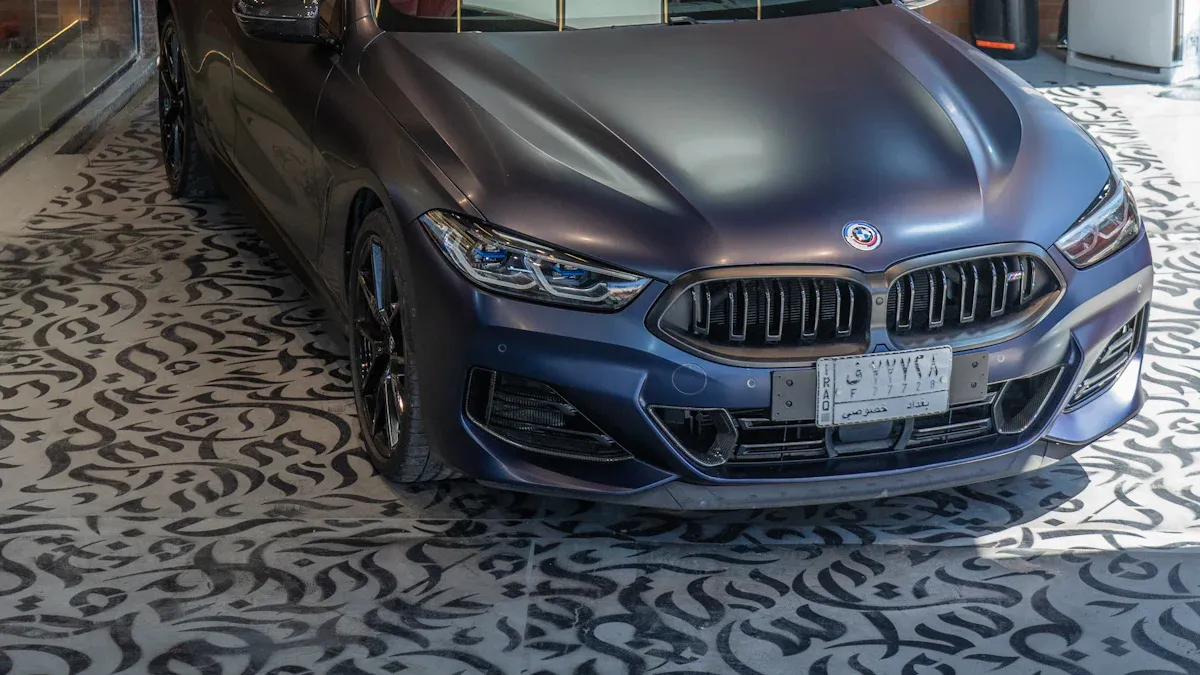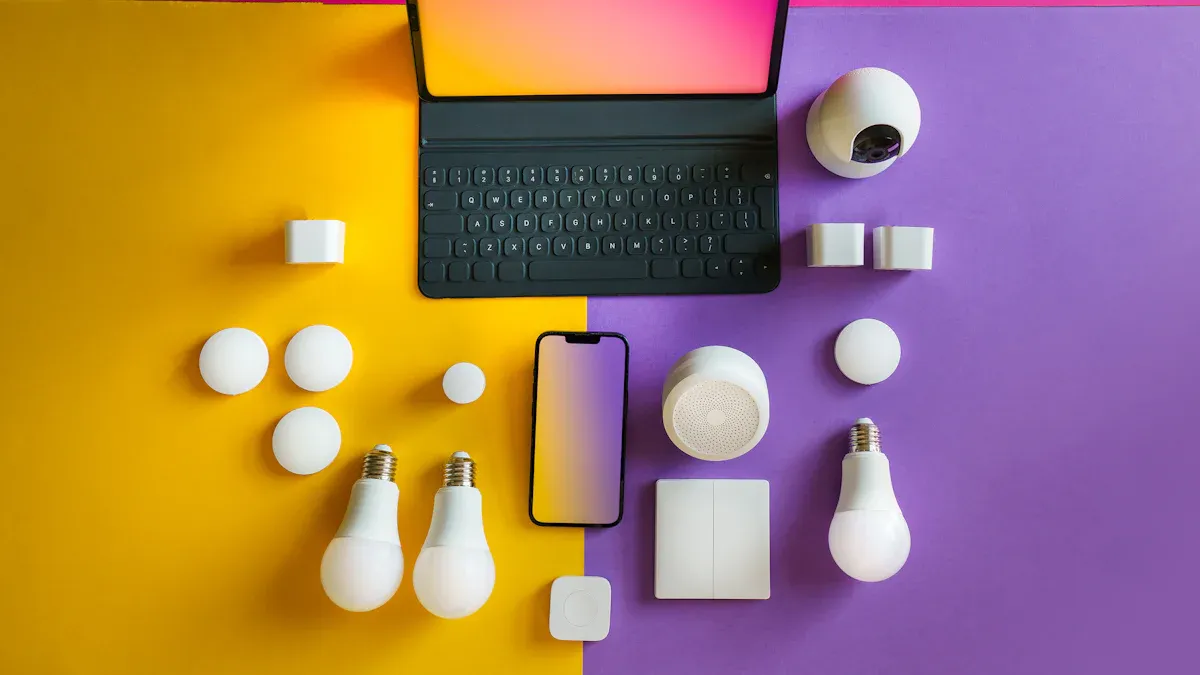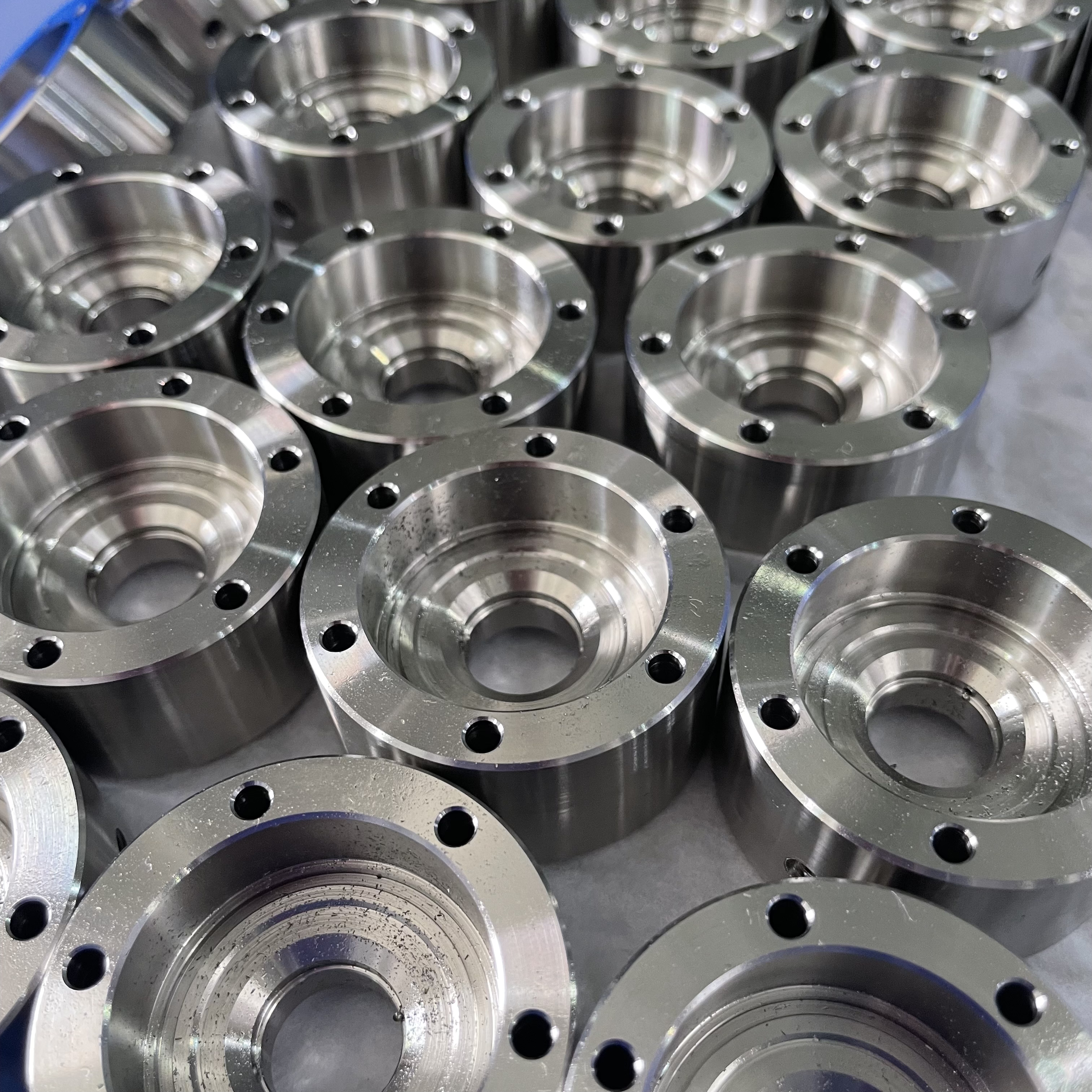CNC Prototyping vs. Traditional Prototyping

Prototyping plays a vital role in turning ideas into tangible models. CNC Prototyping uses automated machinery for precision, while traditional methods rely on manual craftsmanship. Choosing the right approach depends on factors like design complexity, material needs, and cost. Each method offers unique benefits, making it essential to align your choice with project goals.
Key Takeaways
CNC prototyping is very accurate and fast. It works well for quick changes and detailed designs.
Traditional prototyping lets you work by hand and customize easily. It is good for creative ideas and small projects.
Pick a prototyping method by thinking about your goals, materials, money, and time to find the best option.
CNC Prototyping

Definition and Process
CNC prototyping involves using computer-controlled machines to create high-quality prototypes with precision and efficiency. The process begins with design ideations, where you develop multiple concepts for your prototype. Once you finalize a design, it is converted into a 3D file that defines its dimensions and features. Next, the production sequence is identified, outlining the machining steps required. CNC programming follows, where instructions are input into the machine using G-codes and M-codes. After setting up the program, the machine produces the prototype through automated machining. Finally, the prototype undergoes testing to evaluate its functionality, durability, and performance.
Key Features
CNC prototyping stands out for its precision and versatility. It allows you to create prototypes with complex geometries and high dimensional accuracy. Automation ensures repeatability, making it ideal for rapid prototyping. Technological advancements like multi-axis machining and hybrid manufacturing enhance its capabilities further. These features enable you to produce intricate designs with improved surface finishes. CNC machines also support a wide range of materials, from metals to plastics, making them suitable for diverse applications. Additionally, the process is faster and often more cost-effective than traditional methods, especially for small-scale production.
Common Materials
CNC prototyping works with a variety of materials, each chosen for its specific properties. Metals like aluminum, brass, and stainless steel are popular for their strength and durability. Plastics such as ABS, nylon, and polycarbonate are preferred for their low cost and versatility. Composites, known for their lightweight and impact resistance, are also widely used. The table below highlights some common materials and their applications:
Material Type | Properties | Applications |
|---|---|---|
Plastics | High strength, durability, impact resistance | Automotive, consumer goods, medical |
Composites | Lightweight, strong, impact resistance | Prototyping with 3D printing technology |
These materials allow you to create prototypes tailored to your project's needs, ensuring functionality and performance.
Traditional Prototyping
Definition and Process
Traditional prototyping involves creating physical models using manual techniques and tools. This method relies on skilled craftsmanship to shape materials into prototypes that closely resemble the final product. The process typically follows these steps:
Define the main goal of your project and brainstorm ideas with your team.
Focus on one or two features to start.
Sketch your design on paper.
Discuss the design with stakeholders, such as managers or users, to gather feedback.
Revise the design based on feedback.
Transfer the design from paper to a computer using available resources.
Consult with experts and make approved revisions.
Add additional features if the prototype meets expectations.
Document the process continuously for future improvements.
This hands-on approach allows you to refine your prototype iteratively, ensuring it meets your project’s requirements.
Key Features
Traditional prototyping offers several unique characteristics:
Use of materials similar to the final product for realistic testing.
High customization and flexibility.
Tactile feedback for assessing ergonomics.
Reliance on manual craftsmanship for intricate designs.
Subtractive manufacturing, where material is removed to create shapes.
Wide material variety, depending on the prototype’s purpose.
Iterative processes that allow for multiple refinements.
These key aspects of traditional prototyping make it ideal for projects requiring detailed, hands-on development.
Common Materials
Traditional prototyping uses a wide range of materials, each chosen for its specific advantages. The table below highlights some common materials and their applications:
Prototyping Material | Advantages | Applications |
|---|---|---|
Metals | Strength and durability | Aerospace, automotive, industrial prototypes |
Rubber and Silicone | Elasticity, heat resistance | Automotive, medical devices |
Ceramics | High-temperature resistance | Electronics, aerospace |
Bioplastics | Environmentally friendly | Eco-friendly packaging |
Thermoplastics | Recyclability | Healthcare, consumer goods |
Foam | Lightweight, easy to shape | Packaging design |
These materials allow you to create prototypes tailored to specific needs, ensuring functionality and performance.
CNC Prototyping vs. Traditional Prototyping: Key Comparisons

Speed and Efficiency
When it comes to speed, CNC prototyping outperforms traditional methods. Rapid prototyping technologies, including CNC machining, streamline the process by automating production. This allows you to create prototypes quickly and iterate designs faster. Traditional prototyping, on the other hand, relies on manual processes that can be time-consuming, especially when revisions are needed. Industries where time-to-market is critical benefit significantly from the rapid turnaround of CNC prototyping.
Cost
Cost considerations vary depending on your project scale. CNC prototyping involves higher initial investments due to setup and material costs. However, it offers long-term savings by reducing errors and ensuring precision. Traditional prototyping may have lower upfront costs, but manual labor and design changes can escalate expenses over time. For small-scale projects, CNC machining might seem expensive, but its ability to produce high-quality prototypes often justifies the cost.
Design Flexibility
CNC prototyping provides excellent flexibility for creating intricate designs. However, it has limitations, such as difficulty in producing undercuts or deep cavities. Traditional prototyping offers greater creative freedom, allowing you to experiment with complex geometries and internal structures. This makes it ideal for projects requiring unique or unconventional designs.
Material Options
Both methods support a wide range of materials. CNC prototyping excels with metals like aluminum and stainless steel, as well as plastics and composites. Traditional prototyping also uses diverse materials, including ceramics and bioplastics. The table below highlights some material options:
Material | Characteristics |
|---|---|
Brass | Strong, durable, easy to machine, can be polished, but expensive for prototyping. |
Stainless Steel | Strong, corrosion-resistant, easy to machine, can be polished. |
Plastics | Low-cost, strong, durable, easy to machine, versatile in shapes and sizes. |
Composites | Durable, easily modified, typically used with 3D printing technology. |
Aluminum | Strong, lightweight, easy to work with, can be machined to tight tolerances. |
Scalability
CNC prototyping is highly scalable, making it suitable for both small and large production runs. Automation ensures consistency across multiple prototypes, which is challenging to achieve with traditional methods. Traditional prototyping, while effective for one-off models, struggles to maintain uniformity in larger quantities.
Advantages and Disadvantages
CNC Prototyping: Advantages
CNC prototyping offers several key benefits that make it a preferred choice for many projects:
High Accuracy: CNC machining ensures exceptional precision due to its computerized controls. This accuracy minimizes errors and guarantees prototypes meet exact specifications.
Material Versatility: You can work with a wide range of materials, including metals, plastics, and composites, which enhances design flexibility.
Easy Design Changes: Modifications are simple. Adjusting CAD files allows you to iterate designs quickly without significant costs.
Efficiency: CNC machining supports rapid prototyping, saving time and money, especially for complex designs or small production runs.
Advantage | Description |
|---|---|
High Accuracy | CNC milling provides an exceptionally high degree of accuracy and precision due to computerized controls. |
Material Versatility | CNC machining can work with a wide range of materials, enhancing design flexibility. |
Easy Design Changes | Modifications can be made easily by adjusting CAD files, minimizing costs for design iterations. |
CNC Prototyping: Disadvantages
Despite its advantages, CNC prototyping has some limitations:
High Costs: CNC machines and materials are expensive, especially compared to other methods like 3D printing.
Complexity: Operating CNC machines requires specialized knowledge and training.
Environmental Impact: CNC machining generates noise and dust, which can affect the workspace environment.
Production Volume: For large-scale production, CNC machining may require multiple setups, increasing time and costs.
Traditional Prototyping: Advantages
The benefits of traditional prototyping make it ideal for small-scale or low-budget projects:
High Fidelity: You can create detailed and accurate models, which are essential for evaluating aesthetics and functionality.
Material Properties: Using materials similar to the final product allows for realistic testing of strength and durability.
Customization: Traditional methods provide flexibility, enabling you to experiment with unique designs.
Tactile Feedback: Physical prototypes help assess ergonomics, fit, and finish effectively.
Advantage | Description |
|---|---|
High Fidelity | Produces highly detailed and accurate models, crucial for aesthetic and functional evaluation. |
Material Properties | Uses similar materials to the final product for accurate testing of strength and durability. |
Customization | Allows for a high degree of customization and flexibility in design elements. |
Tactile Feedback | Provides a tangible representation for assessing ergonomics, fit, and finish. |
Traditional Prototyping: Disadvantages
Traditional prototyping also has its drawbacks, particularly in terms of scalability and precision:
Time-Consuming: Manual processes require extensive handling, leading to longer development cycles.
High Cost: Skilled labor and specialized tools increase production expenses.
Limited Iterations: The time and cost involved restrict the number of design refinements.
Material Constraints: Certain materials may not be compatible with traditional methods, limiting their use.
Size and Scale Limitations: Handling large prototypes can lead to inaccuracies and structural weaknesses.
Disadvantage | Explanation |
|---|---|
Time-Consuming | Traditional methods require extensive handling and fabrication, leading to longer development cycles. |
High Cost | Skilled labor and specialized tools increase production costs significantly. |
Limited Iterations | The high time and cost restrict the number of iterations, limiting design exploration and refinement. |
Material Constraints | Certain materials may not be compatible with traditional methods, affecting the simulation of material properties. |
Size and Scale Limitations | Logistical challenges in handling large prototypes can lead to inaccuracies and structural weaknesses. |
Applications of CNC Prototyping and Traditional Prototyping
When to Use CNC Prototyping
CNC prototyping is ideal for industries that demand precision and repeatability. You can use it to create prototypes for medical devices, automotive parts, and aerospace components. For example:
Medical industries rely on CNC machining for intricate designs like implants, surgical instruments, and orthotic devices.
Automotive manufacturers use CNC prototyping to test parts such as gears, shafts, and engine components before mass production.
Aerospace applications include producing critical components like bulkheads and wing skins, where high precision is essential.
CNC prototyping also excels when you need rapid iterations or low-to-mid volume production. Its ability to handle a wide range of materials, including metals and high-performance plastics, makes it versatile. If your project requires tight tolerances or functional testing, CNC machining ensures accuracy and reliability.
When to Use Traditional Prototyping
Traditional prototyping works best for creative and small-scale projects. It allows you to refine designs manually, making it suitable for industries like education, art, and architecture. The table below highlights some common applications:
Industry | Application Description |
|---|---|
Product Development | Creating physical models to evaluate form, fit, and function before mass production. |
Architectural Design | Building scale models to visualize designs and adjust for functionality and aesthetics. |
Artistic and Sculptural Modeling | Carving and sculpting detailed models to refine artistic visions. |
Medical Prototyping | Developing prototypes of medical devices for testing and validation. |
Traditional methods are also valuable when you need tactile feedback or high customization. They allow you to experiment with unique designs and materials, making them ideal for hands-on projects.
Factors to Consider
When deciding between CNC prototyping and traditional prototyping, you should evaluate several factors:
Speed and Flexibility: CNC prototyping offers rapid iterations, while traditional methods allow for more creative freedom.
Cost Considerations: CNC machining may have higher upfront costs but reduces errors and labor expenses over time.
Material Options: CNC supports a wide range of materials, including metals and composites, while traditional methods excel with materials like foam and bioplastics.
Precision: CNC machining provides tight tolerances, crucial for functional testing.
Volume: CNC is better for low-to-mid volume production, while traditional methods suit one-off models.
By assessing these factors, you can choose the method that aligns with your project's goals and requirements.
Choosing between CNC prototyping and traditional prototyping depends on your project’s unique needs. CNC prototyping excels in precision, scalability, and speed, while traditional methods offer hands-on flexibility and lower costs. To make the right choice, consider these project-specific factors:
Factor | Description |
|---|---|
Purpose | Determines the best technology based on intended use, such as functional testing or visual presentation. |
Target Audience | Influences the choice of method based on who will interact with the prototype, like engineers or designers. |
Material Requirements | Depends on the specific properties needed, such as flexibility or durability for different industries. |
Timeline | Affects the choice based on how quickly the prototype needs to be completed, impacting efficiency. |
Budget | Determines the feasibility of different prototyping methods based on available resources. |
For guidance:
Use CNC prototyping for quick iterations, high precision, and complex designs.
Opt for traditional prototyping when tactile feedback or manual adjustments are essential.
Both methods have their strengths. Align your choice with your project’s goals to achieve the best results.
FAQ
What is the main difference between CNC prototyping and traditional prototyping?
CNC prototyping uses automated machines for precision, while traditional prototyping relies on manual craftsmanship. CNC is faster and more scalable, but traditional methods offer hands-on flexibility.
Which method is better for small-scale projects?
Traditional prototyping works better for small-scale projects. It allows you to refine designs manually and experiment with materials, making it ideal for creative or low-budget tasks.
Can CNC prototyping handle complex designs?
Yes, CNC prototyping excels at creating intricate designs with high precision. Its automated process ensures accuracy, even for prototypes with complex geometries or tight tolerances.
See Also
Overcoming Obstacles: Improving CNC Prototyping Precision And Speed
Understanding CNC Machining: Precision, Prototypes, And Material Choices
Investigating CNC Machining Solutions For High-Quality Production
CNC Precision Component Processing: Impacting Production Expenses
Enhancing Product Innovation Through Effective Prototyping Services
About US
Follow Us
Your prototype holds unparalleled significance, and we deeply value its uniqueness. Collaborating with you during the preparation phase for running your prototype or parts is a commitment we gladly embrace. Whether it's a single part or a complex assembly, we are dedicated to selecting the optimal tools and pathways to bring your envisioned product to life.
At Precision Fab CNC Machining, we specialize in producing parts for prototypes, short runs, and high-volume production. Our prototyping machine capabilities extend across metal, plastic, and wood machining, with welding fabrication services available to complement and finalize your prototype if required.
Address
Address: Room320 10F, Building A,Nanshan international building, Dayawan District, Huizhou, Guangdong, 516001 China
Contacts
billy@timaycnc.com

